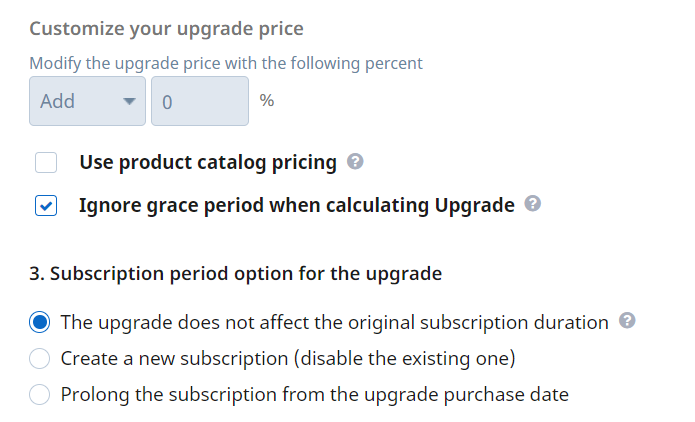Use PayPal
Overview
Place an order with dynamic product information, and collect the payment using PayPal.
Parameters
| Parameters | Type/Description |
|---|---|
| sessionID | Required (string) |
| Session identifier, the output of the Login method. Include sessionID into all your requests. 2Checkout throws an exception if the values are incorrect. The sessionID expires in 10 minutes. | |
| Order | Required (Object) |
|
Object designed to collect all data necessary for an order, including billing, product/subscription plan and payment details. To place an order with PayPal rather than PayPal Express, use PAYPAL as the type of the PaymentDetails object and send the shopper email and a return URL as part of the PaymentMethod object. See code sample. |
Workflow
- Create the order object. Use PAYPAL as the type of the PaymentDetails object and send the shopper email and a return URL as part of the PaymentMethod object. Place the order.
- Once you place the order, 2Checkout logs it into the system. At this point in time, the status of the order is PENDING. 2Checkout responds with the Order information object.
- Redirect shoppers to the RedirectURL from the Order information object you receive as response from 2Checkout.
- Once shoppers log into their PayPal account and complete the transaction, they're redirected to the ReturnURL you set in the order object. 2Checkout also authorizes the order and updates the status to AUTHRECEIVED.
Response
| Order information | Type/Description |
|---|---|
| Order Information | Object containing order information. |
Request
<?php
declare(strict_types=1);
class Configuration
{
public const MERCHANT_CODE = '';
public const MERCHANT_KEY = '';
public const URL = 'http://api.2checkout.com/soap/6.0';
public const ACTION = 'placeOrder';
public const ADDITIONAL_OPTIONS = null;
//array or JSON
public const PAYLOAD = <<<JSON
{
"Country": "us",
"Currency": "USD",
"CustomerIP": "91.220.121.21",
"ExternalReference": "SOAP_API_AVANGTE",
"Language": "en",
"Source": "testAPI.com",
"BillingDetails": {
"Address1": "Test Address",
"City": "LA",
"State": "California",
"CountryCode": "US",
"Email": "testcustomer@2Checkout.com",
"FirstName": "Customer",
"LastName": "2Checkout",
"Zip": "12345"
},
"Items": [
{
"Name": "Dynamic product",
"Description": "Test description",
"Quantity": 1,
"IsDynamic": true,
"Tangible": false,
"PurchaseType": "PRODUCT",
"Price": {
"Amount": 100,
"Type": "CUSTOM"
},
"ProductTaxCategoryUUID": "2ad5ecfe-508d-4852-bd24-d400c297523b",
"PriceType": "NET",
"PriceOptions": [
{
"Name": "OPT1",
"Options": [
{
"Name": "Name LR",
"Value": "Value LR",
"Surcharge": 7
}
]
}
],
"RecurringOptions": {
"CycleLength": 2,
"CycleUnit": "DAY",
"CycleAmount": 12.2,
"ContractLength": 3,
"ContractUnit": "DAY"
}
}
],
"PaymentDetails": {
"Currency": "USD",
"CustomerIP": "91.220.121.21",
"PaymentMethod": {
"RecurringEnabled": false,
"ReturnURL": "http://secure.avangate.local/test/index.php",
"CancelURL": "http://secure.avangate.local/test/create_order.php"
},
"Type": "PAYPAL"
}
}
JSON;
}
class Client
{
public function call(
string $url = Configuration::URL,
$payload = Configuration::PAYLOAD,
string $action = Configuration::ACTION
): ?object {
if (is_array($payload)) {
$payload = json_encode($payload);
}
if (!empty($payload)) {
// SoapClient works with objects(StdClass)
$payload = json_decode($payload);
}
$soapClient = $this->getClient($url);
$sessionId = $this->getSession($soapClient);
$args = array_filter([$sessionId, $payload]);
return $soapClient->$action(...$args);
}
public function getClient(string $url): SoapClient
{
return new SoapClient(
$url.'?wsdl',
[
'location' => $url,
'cache_wsdl' => WSDL_CACHE_NONE,
]
);
}
public function getSession(SoapClient $client)
{
$date = gmdate('Y-m-d H:i:s');
$merchantCode = Configuration::MERCHANT_CODE;
$key = Configuration::MERCHANT_KEY;
$string = strlen($merchantCode).$merchantCode.strlen($date).$date;
$hash = hash_hmac('md5', $string, $key);
$client->__setCookie('XDEBUG_SESSION', 'PHPSTORM');
return $client->login($merchantCode, $date, $hash);
}
}
try {
$client = new Client();
var_dump($client->call());
} catch (Exception $ex) {
var_dump($ex);
}

